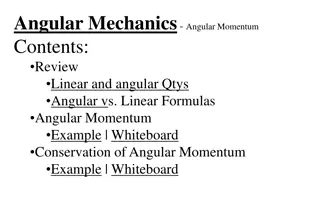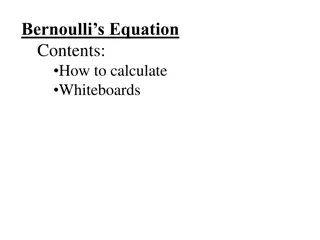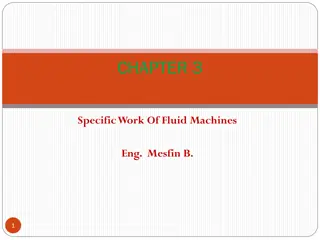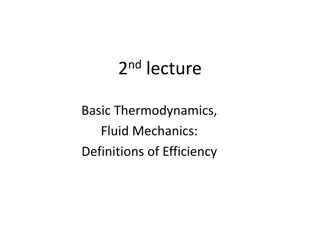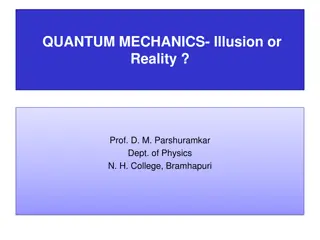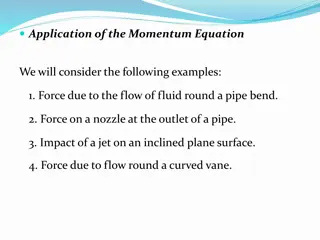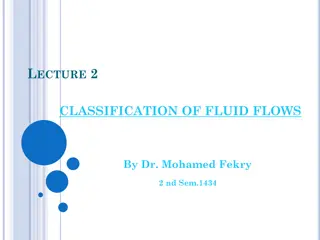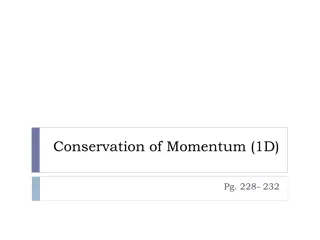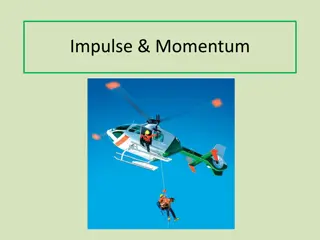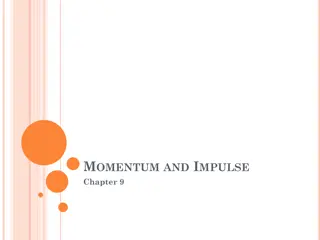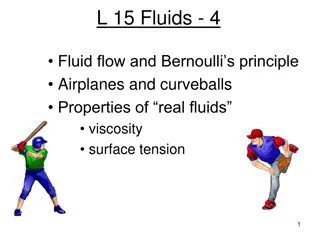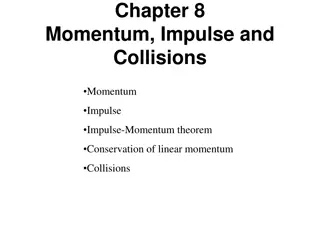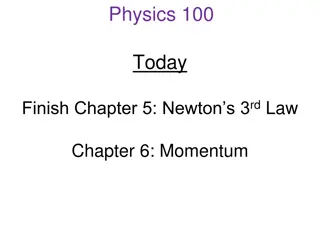Fluid Mechanics Problem Solving with Bernoulli and Momentum Equations
Explore solved problems related to Bernoulli and momentum equations in fluid mechanics, including calculations of discharge, velocity, flow types, pressure losses, and energy lines. Dive into scenarios involving conduit profiles, pipeline configurations, and Reynolds number calculations for water and air flows. Understand momentum conservation principles with practical applications like force analysis on vanes.
Download Presentation

Please find below an Image/Link to download the presentation.
The content on the website is provided AS IS for your information and personal use only. It may not be sold, licensed, or shared on other websites without obtaining consent from the author.If you encounter any issues during the download, it is possible that the publisher has removed the file from their server.
You are allowed to download the files provided on this website for personal or commercial use, subject to the condition that they are used lawfully. All files are the property of their respective owners.
The content on the website is provided AS IS for your information and personal use only. It may not be sold, licensed, or shared on other websites without obtaining consent from the author.
E N D
Presentation Transcript
Solved problems on Bernoulli and momentum equations
Solved problem 4.1. On a circular conduit there are different diameters: diameter D1 = 2 m changes into D2 = 3 m. The velocity in the entrance profile was measured: v1 = 3 ms-1. Calculate the discharge and mean velocity at the outlet profile (see fig. 1). Determine also type of flow in both conduit profiles (whether the flow is laminar or turbulent) temperature of water T = 12 C
Solved problem 4.2. A horizontal pipeline is attached to the wall of reservoir (see fig. 2). The pipeline has different profiles. The water level in the upper reservoir is in the height H = 1.5 m above the pipeline axis. From the lower end of the pipeline water flows out to the open space. Diameters and lengths of pipeline reaches are: D1 = 0.24 m, L1 = 3 m, D2 = 0.1 m, L2 = 1 m, D3 = 0.12 m, L3 = 2 m. Calculate discharge in the pipeline and draw the course of energy line (EL) and pressure line (PL). Resolve the problem: a) Neglecting losses (i.e. consider the liquid to be ideal) b) Considering losses for water of temperature 10 C. Steel pipeline consider to be after usage (slightly rusted).
Question 2: Water flows through a 2cm diameter pipe at 1.6m/s. Calculate the Reynolds number and find also the velocity required to give the same Reynolds number when the pipe is transporting air. For the water the kinematic viscosity was 1.31 10-6 m2/s and the density was 1000 kg/m3. For air those quantities were 15.1 10-6 m2/s and 1.19kg/m3.
Question : Momentum conservation The figure below shows a smooth curved vane attached to a rigid foundation. The jet of water, rectangular in section, 75mm wide and 25mm thick, strike the vane with a velocity of 25m/s. Calculate the vertical and horizontal components of the force exerted on the vane and indicate in which direction these components act. Note that Q=m. mass flow rate
Question : Momentum conservation A 600mm diameter pipeline carries water under a head of 30m with a velocity of 3m/s. This water main is fitted with a horizontal bend which turns the axis of the pipeline through 75 (i.e. the internal angle at the bend is 105). Calculate the resultant force on the bend and its angle to the horizontal.
Question 6: Momentum conservation Because the fluid is contracted at the nozzle forces are induced in the nozzle. Anything holding the nozzle (e.g. a fireman) must be strong enough to withstand these forces. Determine these forces. The analysis takes the following procedure: 1) Draw a control volume 2) Decide on co-ordinate axis system 3) Calculate the total force 4) Calculate the pressure force 5) Calculate the body force 6) Calculate the resultant force 1 & 2 Control volume and Co-ordinate axis have been done for you and are shown in the figure below.


